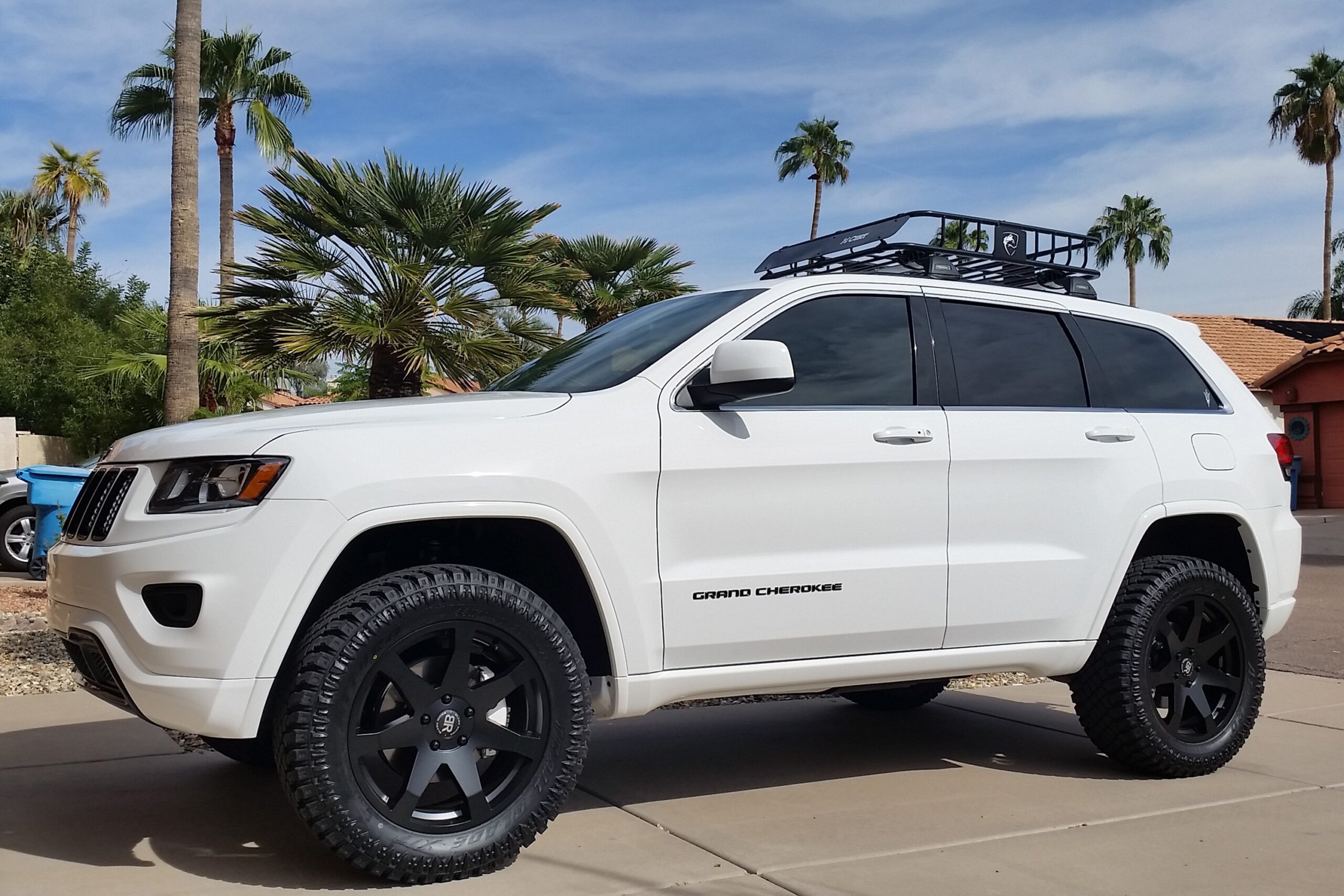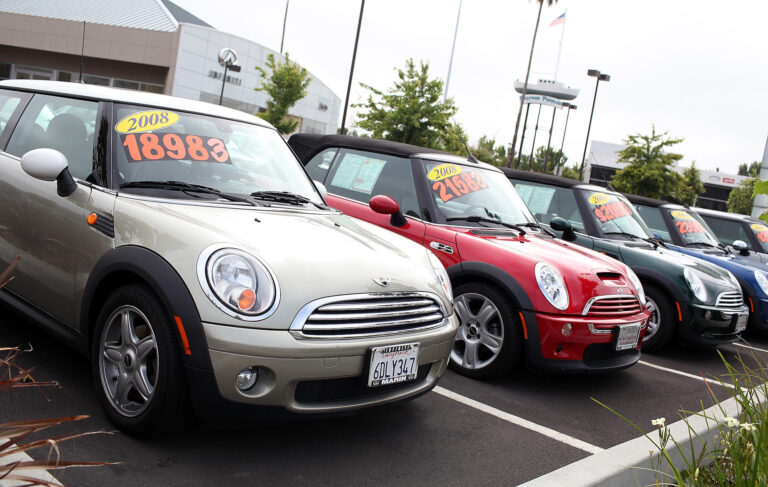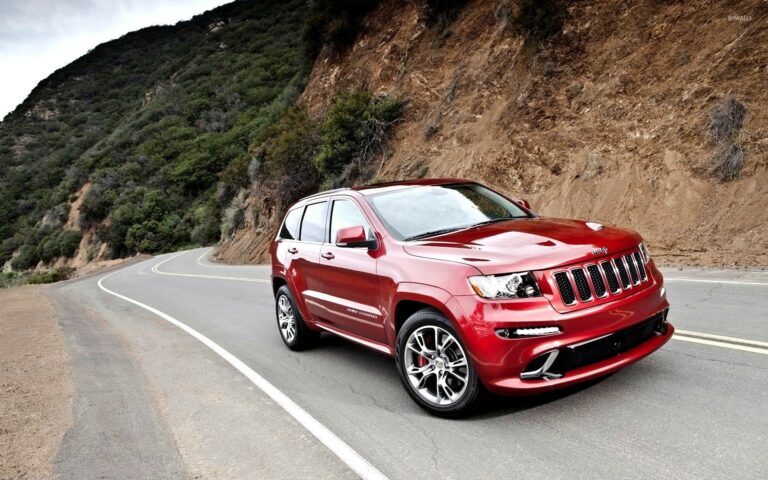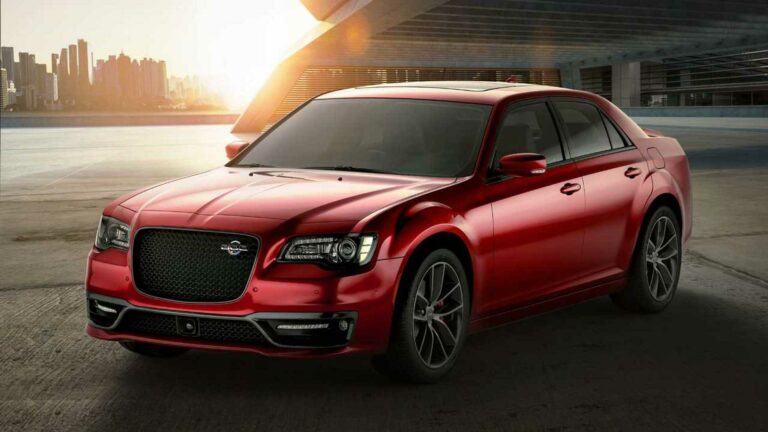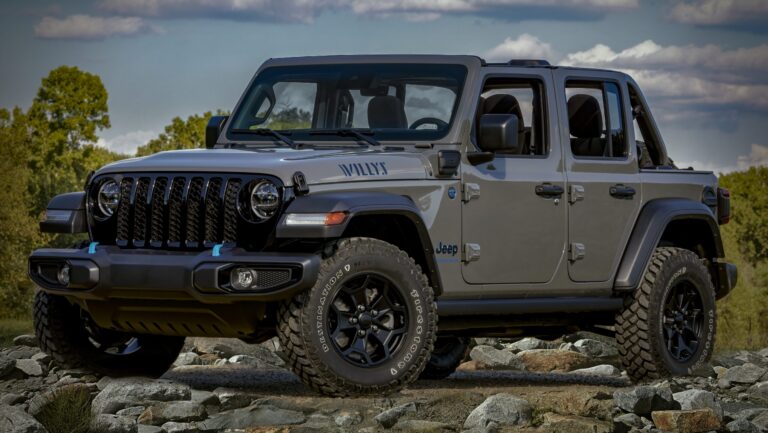Jeep Grand Cherokee Rims: A Comprehensive Guide to Enhancing Your Ride
Jeep Grand Cherokee Rims: A Comprehensive Guide to Enhancing Your Ride jeeps.truckstrend.com
The Jeep Grand Cherokee is renowned for its blend of rugged capability and refined luxury, making it a favorite among SUV enthusiasts. While its powerful engines and comfortable interiors often steal the spotlight, one crucial component plays an indispensable role in both its aesthetics and performance: the rims. More than just decorative elements, Jeep Grand Cherokee rims are the vital link between your tires and the vehicle’s hub, dictating everything from ride quality and handling to off-road prowess and overall curb appeal. Choosing the right set of rims can dramatically transform your Grand Cherokee, enhancing its look, improving its performance, and tailoring it precisely to your driving needs and personal style. This comprehensive guide will delve into every aspect of Jeep Grand Cherokee rims, helping you make an informed decision for your beloved SUV.
Jeep Grand Cherokee Rims: A Comprehensive Guide to Enhancing Your Ride
Understanding Jeep Grand Cherokee Rims: Beyond Just Looks
Before diving into the myriad options available, it’s essential to grasp the fundamental aspects of what makes a rim suitable for your Grand Cherokee. Rims, also commonly referred to as wheels, are designed to support the tire, connect to the vehicle’s axle, and effectively transfer power and braking force. They also play a crucial role in heat dissipation from the brakes.
Key Specifications:
- Diameter: Measured in inches (e.g., 17", 18", 20", 22"). This refers to the rim’s overall height. Larger diameters often accommodate lower-profile tires, which can improve on-road handling and aesthetics.
- Width: Measured in inches (e.g., 7.5", 8", 9"). This refers to the distance across the rim from bead seat to bead seat. The rim width must be compatible with the tire width to ensure proper tire seating and performance.
- Bolt Pattern (PCD – Pitch Circle Diameter): This specifies the number of bolt holes and the diameter of the imaginary circle on which they are arranged. For most modern Grand Cherokees (WK2, WL generations), the common bolt pattern is 5x127mm (5×5 inches). Ensuring the correct bolt pattern is paramount for safe and proper fitment.
- Offset: The distance from the mounting surface of the wheel to the centerline of the rim.

- Positive Offset: The mounting surface is towards the outside of the rim. Most factory Grand Cherokee rims have a positive offset, tucking the wheels further into the wheel wells.
- Negative Offset: The mounting surface is towards the inside of the rim. This pushes the wheels further out, creating a wider stance, often desired for off-roading.
- Zero Offset: The mounting surface is exactly at the centerline.
Correct offset is crucial for preventing rubbing issues with suspension or body components.

- Center Bore: The hole in the center of the rim that centers the wheel on the vehicle’s hub. It should either match the hub’s diameter exactly (hub-centric) or be larger and use hub-centric rings for proper fitment.
Materials:
- Alloy (Aluminum): The most common choice for Grand Cherokees, offering a good balance of strength, lightweight properties, and diverse design possibilities. They dissipate heat effectively.
- Steel: Heavier and less aesthetically appealing, but extremely durable and often found on base models or preferred for heavy-duty off-roading due to their ability to withstand impact without cracking (they bend instead).
- Forged vs. Cast: Forged wheels are made from a solid block of aluminum, pressed into shape, resulting in extreme strength and lightness. Cast wheels are made by pouring molten metal into a mold, which is less expensive but generally heavier and not as strong as forged wheels.

Types of Jeep Grand Cherokee Rims: Finding Your Perfect Match
The market offers a vast array of rims for the Grand Cherokee, each catering to different preferences and performance needs.
- OEM (Original Equipment Manufacturer) Rims: These are the wheels that came with your Grand Cherokee from the factory or are direct replacements from Jeep. They are designed to meet strict quality and fitment standards.
- Pros: Guaranteed fit, known quality, often come in standard sizes (e.g., 17", 18", 20").
- Cons: Limited design options, can be more expensive than some aftermarket alternatives.
- Aftermarket Rims: Produced by independent manufacturers, these offer a nearly endless variety of designs, finishes, and performance characteristics.
- Performance-Oriented: Lighter alloy wheels designed to reduce unsprung weight, improving acceleration, braking, and handling (e.g., BBS, Vossen). Often seen on SRT or Trackhawk models.
- Off-Road Specific: Built for extreme durability, often with reinforced construction and sometimes featuring beadlock capability (to secure the tire bead at very low pressures). Popular brands include Method Race Wheels, Fuel Off-Road.
- Luxury/Custom: Focused purely on aesthetics, offering unique designs, large diameters (up to 22", 24"), and exotic finishes like chrome, polished aluminum, or custom paint.
- Replica Rims: Designed to look like OEM or popular aftermarket designs but are typically produced at a lower cost using different manufacturing processes or materials.
- Pros: Affordable way to get a desired look.
- Cons: Quality can vary significantly; may not meet the same strength or durability standards as OEM or reputable aftermarket brands.
Choosing the Right Rims for Your Grand Cherokee: Key Considerations
Selecting the ideal rims involves more than just picking a design you like. Thoughtful consideration of several factors will ensure optimal performance, safety, and satisfaction.
- Vehicle Model and Year: Always confirm the exact bolt pattern, hub bore, and clearance specifications for your specific Grand Cherokee generation (e.g., WK, WK2, WL). The SRT and Trackhawk models, for instance, often require larger diameter rims to clear their massive brake calipers.
- Intended Use:
- Daily Driving: Focus on durability, reasonable weight, and aesthetic appeal.
- Off-Roading: Prioritize strength, impact resistance, and potentially beadlock compatibility. Consider smaller diameters with larger sidewall tires for better articulation.
- Performance Driving: Opt for lightweight, forged wheels to minimize unsprung weight, improving responsiveness.
- Towing/Hauling: Ensure the rims have adequate load ratings.
- Tire Compatibility: Your chosen rim width must fall within the recommended range for your tires. Mismatched widths can lead to poor handling, uneven tire wear, and even tire bead separation.
- Offset and Backspacing: Experimenting with offset can alter your Grand Cherokee’s stance. A slightly negative offset can push the wheels out for a more aggressive look, but too much can cause rubbing, especially when turning or hitting bumps. Consult with a professional if unsure.
- Brake Clearance: Critical for models with large brake calipers (like SRT, Trackhawk, or aftermarket big brake kits). Ensure the inner barrel of the rim provides sufficient clearance.
- Aesthetics: This is where personal taste comes in. Consider the finish (gloss black, machined, chrome, gunmetal, bronze), spoke design (multi-spoke, five-spoke, directional), and how it complements your vehicle’s color and overall theme.
- Budget: Rim prices vary wildly. Set a realistic budget and prioritize features that matter most to you. Remember to factor in potential costs for new tires, TPMS sensors, and installation.
The Benefits of Upgrading Your Grand Cherokee Rims
Investing in new rims for your Grand Cherokee offers a multitude of advantages beyond just a fresh look.
- Enhanced Aesthetics & Personalization: This is often the primary motivator. New rims instantly change the character of your Grand Cherokee, making it stand out and reflect your individual style.
- Improved Performance: Lighter rims reduce unsprung weight (the weight not supported by the suspension). This leads to:
- Better acceleration and braking responsiveness.
- Improved handling and steering feel.
- Potentially slight improvements in fuel economy.
- Increased Off-Road Capability: Stronger, purpose-built off-road rims can withstand the rigors of challenging terrains, providing peace of mind and enhanced performance in the wild. Beadlock-capable rims allow for extremely low tire pressures for maximum traction.
- Wider Tire Options: Upgrading to wider rims can allow you to mount wider tires, which can improve grip, traction, and overall stability, especially beneficial for performance or off-road applications.
- Potential Resale Value: A well-chosen set of quality aftermarket rims can add appeal and value to your Grand Cherokee, especially if they are a desirable brand or style.
Installation and Maintenance of Jeep Grand Cherokee Rims
Proper installation and ongoing maintenance are crucial for the longevity, performance, and safety of your new rims.
- DIY vs. Professional Installation: While changing a tire is simple, mounting and balancing new rims and tires requires specialized equipment. It’s highly recommended to have new rims and tires professionally installed to ensure proper balancing, correct torque specifications, and TPMS (Tire Pressure Monitoring System) sensor compatibility.
- Torque Specifications: Always use a torque wrench to tighten lug nuts to the manufacturer’s specified torque. Overtightening can stretch studs or warp rotors, while undertightening can lead to loose wheels. Re-check torque after 50-100 miles.
- Balancing: Essential for a smooth ride. Unbalanced wheels can cause vibrations, premature tire wear, and stress on suspension components. Road force balancing is recommended for larger, heavier wheels.
- Cleaning and Care: Different finishes require different care.
- Chrome: Use pH-neutral cleaners and soft cloths to prevent pitting and scratching.
- Painted/Clear-coated: Treat like your car’s paint – wash with car soap and water, avoid abrasive cleaners.
- Polished Aluminum: May require regular polishing to maintain shine.
- General Tips: Clean regularly to remove brake dust (which is corrosive), dirt, and road grime. Avoid automatic car washes with harsh brushes if you have delicate finishes.
- Regular Inspections: Periodically inspect your rims for signs of damage like cracks, bends, curb rash, or corrosion. Addressing minor issues early can prevent more significant problems down the line.
Common Challenges and Solutions
Even with careful planning, challenges can arise when upgrading rims.
- Rubbing/Clearance Issues: If new rims or tires rub against suspension components or fender wells, the offset might be incorrect, or the tire size too large.
- Solution: Adjust offset (spacers, though not always recommended), select a different tire size, or consider a lift kit or fender modifications.
- Vibration After Installation: Often a sign of improper balancing.
- Solution: Have wheels re-balanced by a reputable shop, preferably with road force balancing. Check for bent rims or improper lug nut torque.
- Corrosion/Pitting: Especially common on chrome or polished wheels if not maintained.
- Solution: Regular cleaning, using protective sealants or waxes, and avoiding harsh chemicals.
- Finding Specific Sizes/Styles: Some unique or older Grand Cherokee models might have harder-to-find fitments.
- Solution: Consult with specialized wheel and tire shops, explore online enthusiast forums, and consider custom-made options if budget allows.
Estimated Price Guide for Jeep Grand Cherokee Rims
Prices for Jeep Grand Cherokee rims can vary widely based on material, brand, size, finish, and whether they are OEM or aftermarket. The table below provides typical estimated price ranges per rim. These are subject to change and depend heavily on the specific market and retailer.
| Rim Type | Size Range (Diameter) | Material | Typical Price Range (Per Rim) | Notes |
|---|---|---|---|---|
| OEM (Factory Replacement) | 17" – 20" | Cast Alloy | $200 – $600+ | Direct fit, factory look, can be pricier. |
| Aftermarket Standard | 17" – 22" | Cast Alloy | $150 – $400 | Wide variety of styles, good value. |
| Aftermarket Performance | 20" – 22" | Forged Alloy | $500 – $1,500+ | Lightweight, strong, performance-oriented. |
| Aftermarket Off-Road | 17" – 20" | Cast/Forged Alloy, Steel | $250 – $800+ | Durable, aggressive styling, some beadlock-ready. |
| Luxury/Custom | 22" – 24"+ | Cast/Forged Alloy | $400 – $2,000+ | Unique designs, premium finishes, larger sizes. |
| Replica/Budget | 17" – 20" | Cast Alloy | $100 – $250 | Affordable look-alikes, quality can vary. |
Note: These prices do not include tires, mounting, balancing, TPMS sensors, or installation labor, which can add significant costs to the overall purchase.
Frequently Asked Questions (FAQ) about Jeep Grand Cherokee Rims
Q: Can I put larger rims on my Grand Cherokee?
A: Yes, generally, you can go up a few inches in diameter (e.g., from 18" to 20" or 22") as long as the overall tire diameter remains close to stock and the offset provides adequate clearance. Always check for brake clearance, especially on SRT/Trackhawk models.
Q: What’s the best bolt pattern for a Grand Cherokee?
A: For most modern (WK2, WL generation) Grand Cherokees, the correct bolt pattern is 5x127mm (or 5×5 inches). Older models might vary, so always confirm for your specific year.
Q: Do I need new tires when I get new rims?
A: Not necessarily, but often recommended. If your new rims are a different diameter or width, or if your old tires are worn, new tires will be needed to match the new rim specifications and ensure optimal performance.
Q: How does rim offset affect my vehicle?
A: Offset dictates how far your wheels stick out or tuck into the wheel wells. Incorrect offset can cause tires to rub against fenders or suspension components, affect steering geometry, and potentially impact handling and bearing wear.
Q: Are steel or alloy rims better for off-roading?
A: Steel rims are often preferred for extreme off-roading due to their immense durability and tendency to bend rather than crack under heavy impact. Alloy wheels, especially forged ones, are lighter and stronger for their weight but can crack under severe abuse.
Q: How often should I clean my rims?
A: Ideally, clean your rims every time you wash your vehicle. Brake dust is corrosive and can permanently damage finishes if left on for too long.
Q: What is unsprung weight?
A: Unsprung weight refers to the weight of the vehicle that is not supported by the suspension, including wheels, tires, brakes, and parts of the suspension components. Reducing unsprung weight leads to improved handling, ride comfort, and performance.
Conclusion
Jeep Grand Cherokee rims are far more than just a cosmetic upgrade; they are a critical component that influences your vehicle’s performance, safety, and overall character. From enhancing its rugged off-road appeal to giving it a sleek, luxurious stance, the right set of rims can truly define your Grand Cherokee. By understanding the various types, key specifications, and important considerations discussed in this guide, you are now equipped to make an informed decision that perfectly balances aesthetics, functionality, and your personal driving needs. Whether you prioritize aggressive off-road capability, refined on-road performance, or simply a head-turning look, investing in the right Jeep Grand Cherokee rims is an upgrade that truly pays dividends, allowing your SUV to shine on every adventure.

